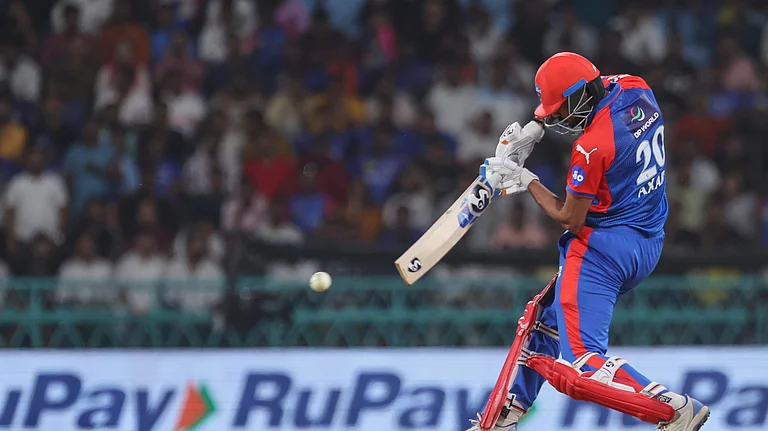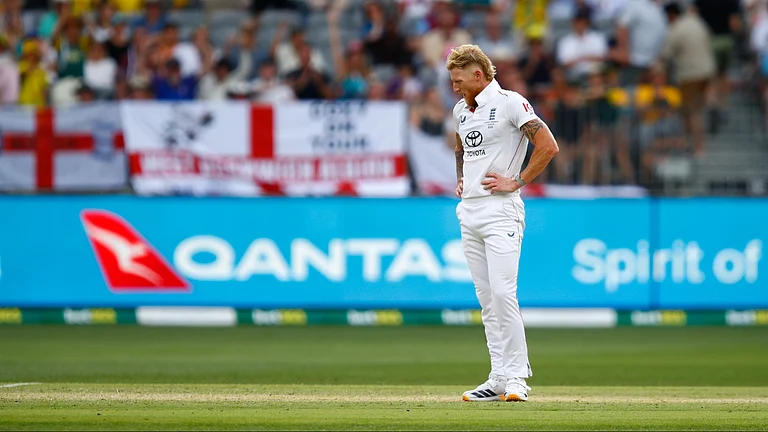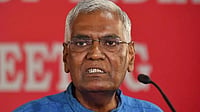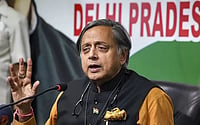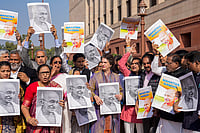CALL it an infusion of corporate culture in tinseltown. Or the confusion of the coexistence of creative, artistic pursuits with money and materials management. But slowly and surely, in Bollywood, the loose-script-shuffling, cash-toting producers of yesteryear are giving way to staid, pin-striped business managers who are more comfortable spewing net profits and earnings per share than zoom, long shot and cut.
Over the past few months and the next, a host of small-budget films are being released. Papa Kehte Hain, Is Raat Ki Subah Nahin, Army, Khamoshi, Aur Ek Prem Kahani, Dil Ke Jharokhe Mein.... Most of them are piggybacking on a single star, some have a fairly known director, but all are produced by slick, corporate entities apparently far removed from the gloss of dross.
Madras-based GV Films, part-owned by director Mani Ratnam, was the trendsetter a few years ago, when it went public and brought management techniques into movie-making. (Ratnam is an MBA from the Bajaj Institute.) But now, it's a virtual stampede. Khamoshi, with Nana Patekar and Manisha Koirala, is presented by music major Polygram, a Philips group company, and produced by US-based Tristar International, the makers of the Terminator series starring Arnold Schwarzenegger, among other movies. Papa Kehte Hain and Is Raat ki... are ventures of Plus Channel, while Dil Ke... is the baby of United Motion Pictures, whose parent, the Rs 500-crore Unilazer Group, and the Plus group are into a host of audiovisual activities. Army was made by MAD-Neha Films, which is backed by Hum-dinger Mukul Anand. Even the normally cautious and choosy HMV is believed to be close to taking a production plunge.
And they mean business. Forty per cent of MAD Entertainment is owned by ITC's financial services company ITC Classic Finance. Dilip Piramal of Blow Plast, Ajit Gulabchand of Hindustan Construction Company and Jayesh Choksi of Gufic Laboratories have interests in Plus Channel. Twenty-seven per cent of United Studios Ltd (USL), the sister concern of UMP which handles the studio business, is held by Rupert Murdoch's Twentieth Century Fox. MAD is going public by the year-end with a premium offering.
Each of these producers is working towards creating an all-encompassing, patriarchal master company, modelled after the Hollywood studios of the 1930s,on their way to becoming a complete entertainment company. Plus markets music, makes television software, and is into event marketing. Both Unilazer and MAD make ad films, TV software. Both are developing studio floors for shooting, editing, mixing and dubbing facilities, costume and prop back-ups. "No longer is it viable for a rich farmer from Punjab to produce a film at random and partake in the glamour world of films," says Sunil Manchanda, joint managing director, MAD Entertainment.
Glamour, glory or greenbacks? What's attracting the corporates into the topsy-turvy world of show business? The third factor. In an industry where out of 400 films begun each year, only about 150 make it to the theatres and a mere third of that go on to make any sort of history at the cash registers, the profits out of a well-managed venture can actually reach starry heights. Maine Pyar Kiya earned a profit of Rs 20 crore against an investment of less than Rs 1 crore. Dilwale Dulhaniya Le Jayenge has already yielded about Rs 150 crore, compared to its cost of Rs 3.5-odd crore. Even a reasonably good film brings in returns for a decade, thanks to satellite and video rights. These are the figures the modern heavyweights are looking at. Most of their films will cost under Rs 1.5 crore.
Plus today has over 12 films in various stages of completion, all in the region of Rs 1 crore. Another six have been finished and released or are about to be released in the scheduled six months. Amit Khanna, managing director, Plus Channel, is expecting a safe 20 to 25 per cent return on each. MAD-Neha has 11 films to be completed by '97-end. UMP is looking at putting out two small and one large budget film a year.
Costs and time schedules have been the bane of most big-banner productions in Bollywood. Costs of making a film have ballooned by 400 per cent—Sholay in 1975 cost about Rs 2.5 crore, compared to around Rs 10 crore it would have cost today—upping the stakes. Says Manchanda: "Production and processing costs rise by 15 per cent every year at least, so any delay means huge additional financial burdens." If you shoot a film over three years, the cost will go up by 50 per cent of the original budget. Secondly, unlike in the past when only 50 prints were needed for a release in limited territories, up to 200 prints are required today. Add to this the marketing and distribution expenses, as also the interest cost of the funds which are rarely lower than 36 per cent, often going up to even 48 per cent.
The other most important factor is film music. A music company could be spending an amount equivalent to one-third of a film's production costs to buy the film's music rights. Says Khanna: "With escalating overheads in these inflation-ridden times it helps to synergise business activities." He should know. Plus Channel's music wing also takes over the music production responsibilities of the films under the banner. Small wonder then that Polygram and HMV would be interested and actively wooed for production participation in a host of new films. Indeed, if you're lucky, just music sales are enough to recoup the entire cost of making the film. What the audience brings in after that is, quite simply, money for nothing.
Ronnie Screwalla, chairman, Unilazer group, estimates a saving of 30 to 40 per cent on film production costs if all related activities are in-house. Khanna refers to what he calls the "hidden agenda" in patronising and encouraging talent. Plus has recently produced R.K. Laxman's audio book, The Messenger. Tomorrow, he feels, he could get the cartoon maestro to write a movie script!
Then there are the frills. Rentals from studio and equipment yield a regular income. MAD expects rentals to get in about Rs 2 crore. Ad films will get another Rs 1.5 crore. With several projects on the floor, the company gains from economies of scale. Sharing editing facilities, enjoying credit and credibility with say, raw stock suppliers are some. Plus, for instance, deals directly with Kodak for film. Funds come cheaper from banks, which have till now shied away from financing films, since movie-making in India doesn't have industry status. And cheque payments are the norm rather than exception for these corporate dream merchants.
Safety is the operative word. The likes of Mukul Anand and Screwalla, with experience in more professional industries like advertising, are retaining their strengths from the past. Screwalla is applying strict budgetary controls and detailed planning. MAD's Manchanda says a 5 to 10 per cent cost fluctuation is built into the finance planning and sourcing. "Ours is a conservative approach with a sense of adventure," says Screwalla. Stars in a film assure initial audiences and a 6-out-of-10 chance of success which otherwise Screwalla pegs at three out of 10. The Rs 1.5 crore project is a safe bet for the over Rs 100-crore Unilazer Group while testing the golden waters of filmdom for the first time. Plus is looking at films contributing to about just 15 per cent of turnover while MAD expects a minimal turnover of Rs 2 crore. MAD has invested only an initial Rs 3.5 crore to get the MAD-Neha banner started.
Success, believe the new movie moghuls-to-be, will surely come to organised, credible production houses as they get ready some professionally-produced entertainment for a back-from-the-video-fold audience, presumed to have grown three-fold in the past decade. May they be right.







